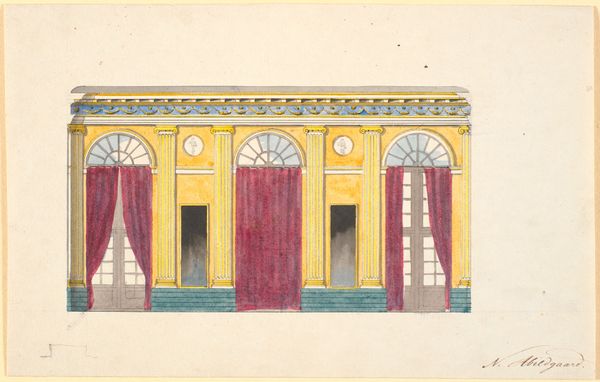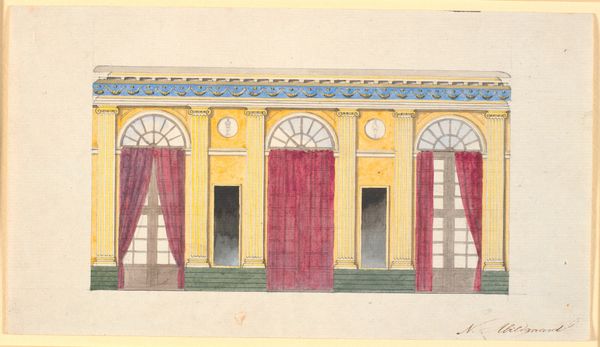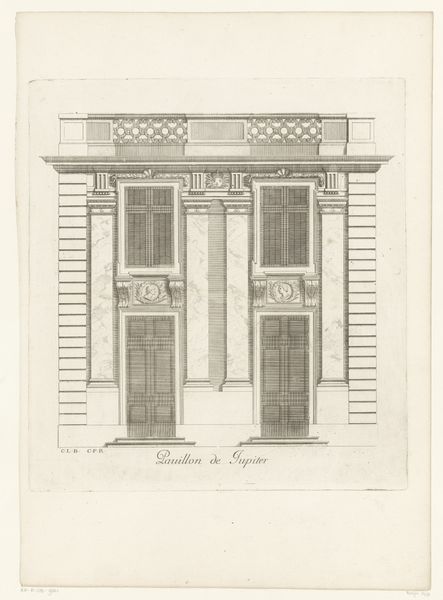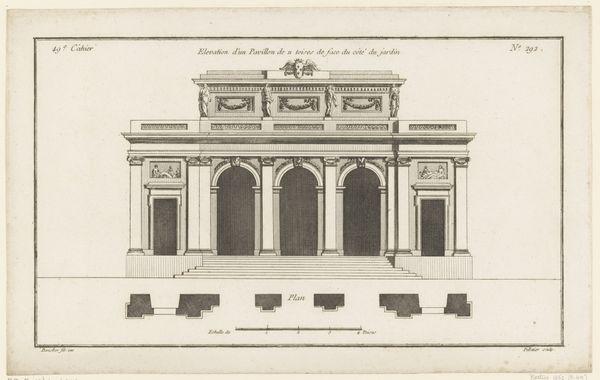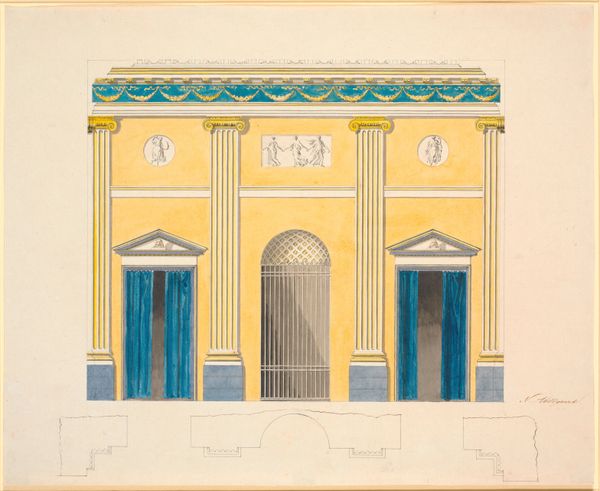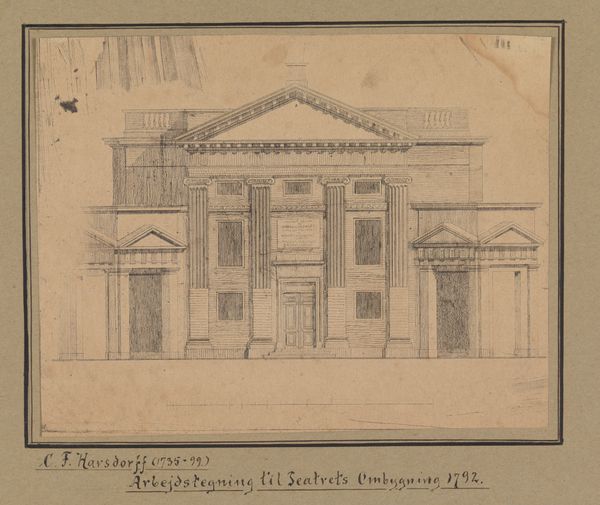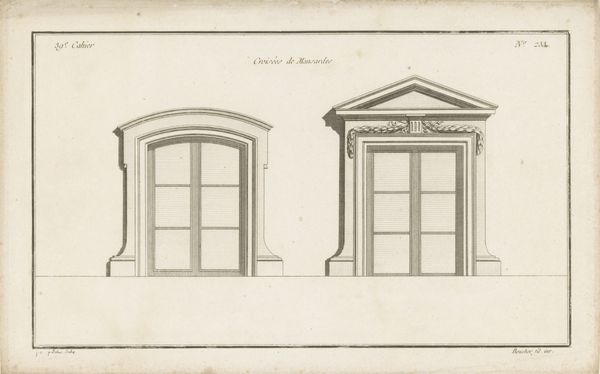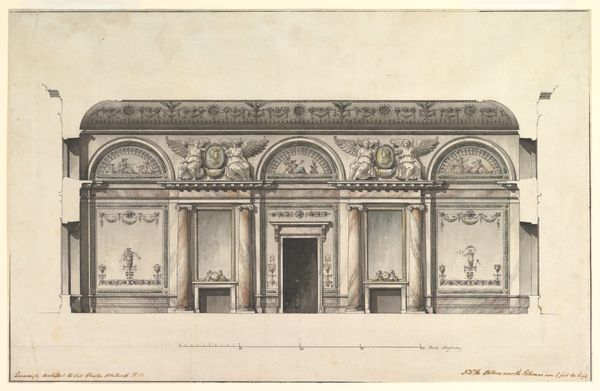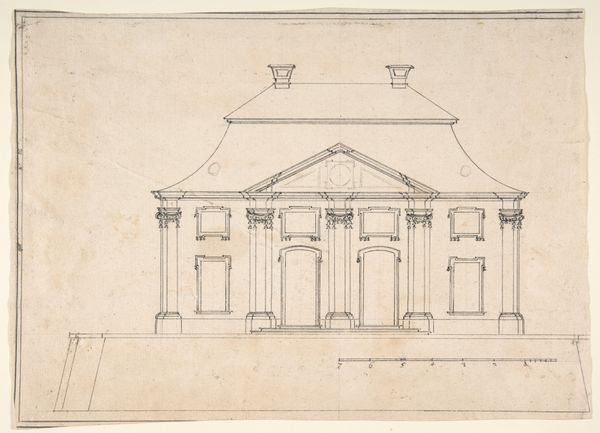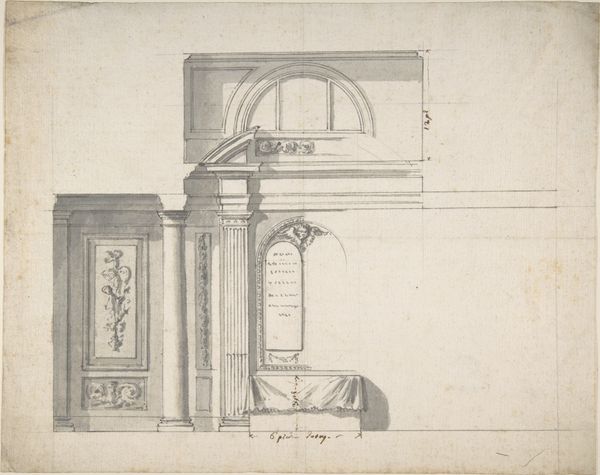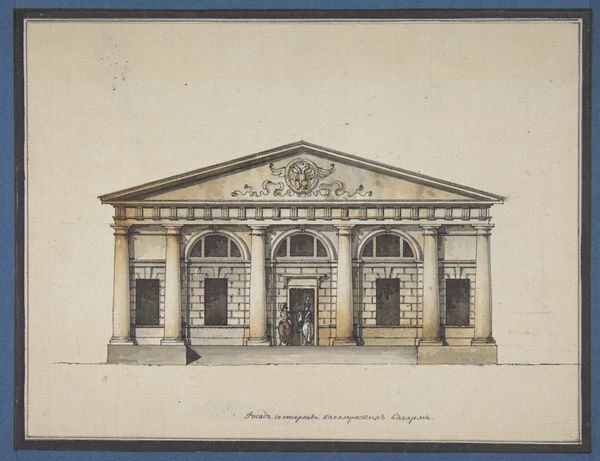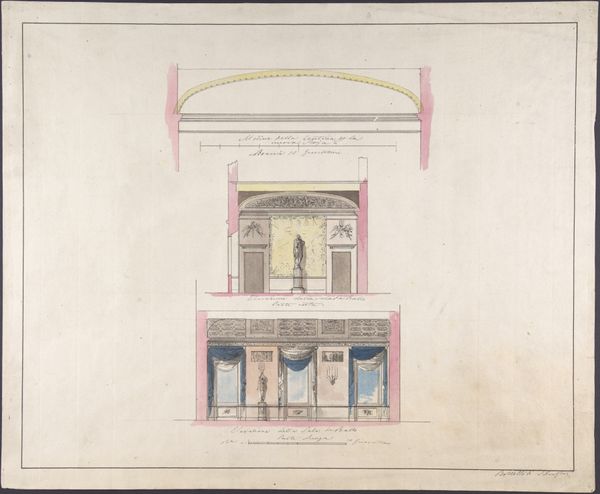
Udkast til dekoration af kortvæg i Gallasalen, med røde portierer 1743 - 1809
0:00
0:00
drawing, coloured-pencil, watercolor, architecture
#
drawing
#
neoclacissism
#
coloured-pencil
#
landscape
#
watercolor
#
coloured pencil
#
cityscape
#
watercolour illustration
#
architecture
Dimensions: 175 mm (height) x 239 mm (width) (bladmaal)
Curator: This drawing by Nicolai Abildgaard, made between 1743 and 1809, is entitled "Udkast til dekoration af kortvæg i Gallasalen, med røde portierer." It resides here at the SMK, Statens Museum for Kunst. Editor: Well, hello there, little stage set! Immediately, I feel like I'm peering at a theatre design. The red drapes especially give off such a dramatic, ready-for-performance vibe. Curator: That's insightful. Consider that Abildgaard was deeply engaged with Neoclassicism and theatrical design. His artistic practice was very much about reshaping Danish visual culture. This sketch, a draft for the Gallasalen’s wall decoration, shows his approach. We should think of it less as simply decorative and more as a declaration. Editor: A declaration? How so? Is it those somewhat austere pillars? It does suggest power... perhaps civic pride? And what about the colour, this very specific shade of old gold combined with burgundy that conveys solemnity. Curator: Precisely. Think about the social and political currents. Abildgaard's neoclassicism was intertwined with notions of civic virtue, reason, and order—all emerging from the Enlightenment. The architecture implies permanence, rationality. The "stage set," as you called it, invites reflection on the role of governance and aesthetics within the social framework of the time. And in these times, with growing popular discontent, art took on such an additional purpose. Editor: Ah, so the portierer! A splash of rich colour but also a barrier, maybe suggesting carefully controlled access to power and ideas...It's clever how a simple colour choice starts to open up ideas about what’s included, what’s excluded, and how hierarchies play out. Did Abildgaard see art's role in those struggles? Curator: Absolutely. His works consistently engaged with questions of morality and societal ideals. He perceived the role of art as critical, challenging conventional narratives and pushing for reform through visually engaging representations of history, mythology, and contemporary socio-political discourse. Editor: That gives the artwork much more emotional depth. Now it isn't just pretty scenery. The rigid, neoclassical framing emphasizes a longing for societal ideals, almost like Abildgaard hints at how difficult it could be to realize that vision. Curator: I'd agree, seeing how he explores not only the grandeur of his vision, but the tensions inherent within that very aspiration. Editor: It gives you food for thought, doesn't it? Even in something that appears simply ornamental on the surface. Curator: It truly exemplifies that an aesthetic piece often has layers interwoven with critical reflections. Editor: I see the gilded cage! I love it.
Comments
No comments
Be the first to comment and join the conversation on the ultimate creative platform.
